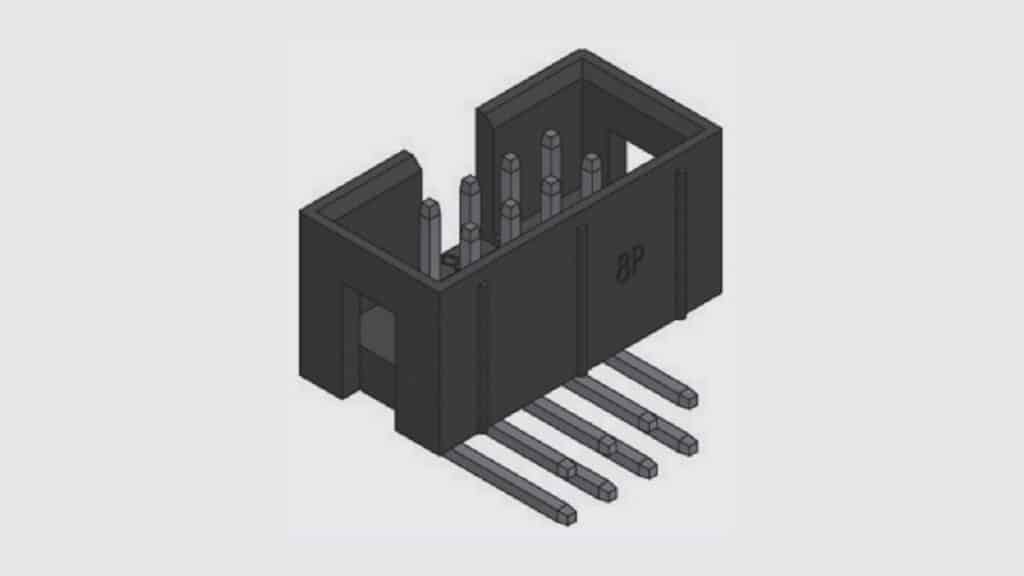In Chapter I/1.2.1 Connector Housing, the four major functions of a connector housing were identified as:
Electrical insulation: All of the individual contacts within the connector housing must be electrically insulated from one another in order to perform their designated function. Connector pin counts of more than 1000 have been realized. In some cases, power distribution for example, multiple contacts may be interconnected, usually on the power and/or ground plane of a PCB. As noted in Chapter I/1.4.3 Polymer Materials and Processing the polymer materials used for connector housings have very high volume and surface resistivities. Volume resistivity is an intrinsic property and typical engineering polymer values are in the range of 1016 W-cm. Surface resistivities are dependent on surface contamination and degradation. Two other electrical parameters related to these resistivities merit mention, the dielectric strength and Dielectric Withstanding Voltage (DWV). The dielectric strength quantifies the ability of a polymer to withstand an applied voltage without electrical breakdown through the thickness of the polymer, in volts/cm and correlates with volume resistivity. DWV specifies the voltage that can be applied across the surface of the polymer without creating surface conduction paths over the polymer and is a measure of surface degradation. The stability of these resistances with respect to time, temperature and environmental degradation must be considered during material selection. The electrical insulation characteristics of a connector housing are dependent on both the design and material of the housing as will be discussed.
Dimensional stability: The two halves of the housing must mate together and, therefore, their mating features must be of corresponding shapes and on the same centerlines. The dimensional control required, obviously, depends on the size and the centerline spacing, of the housing. Centerline spacings can vary from 2.54 mm (0.100 in) to 0.4 mm (0.016 in.) with corresponding decreases in dimensional tolerance requirements. Connector housings greater than 30 cm, (12 inches) have been molded successfully. The ability to realize these levels of dimensional control, both during molding of the housings and in field applications is an important consideration in housing design and material selection.
Mechanical support: In many connector designs the contacts are “latched” into the housing for mechanical support as well as dimensional control. Because spring deflections are responsible for creating the contact force, the mechanical stability of the support provided by the connector housing can have a significant impact on the spring characteristics of such connectors. For example, polymer creep at a retention groove in a housing may result in a change in the contact spring deflection, with an accompanying decrease in the contact normal force. Once again, this requirement impacts on the design and materials choices for the housing.
Environmental shielding: The effectiveness of the environmental shielding provided by a connector depends entirely on the design of the housing. The basic guideline is to keep the openings in the housing to a minimum to restrict the access of the environment to the separable connection, in all cases, and to the permanent connections depending on the design. There is one exception to this general guideline. In the case of power connectors, air flow channels through the housing may be beneficial in reducing the temperature rise of the connector due to Joule, I2 R, heating.
Consider now how these requirements influence material selection and housing design decisions.
